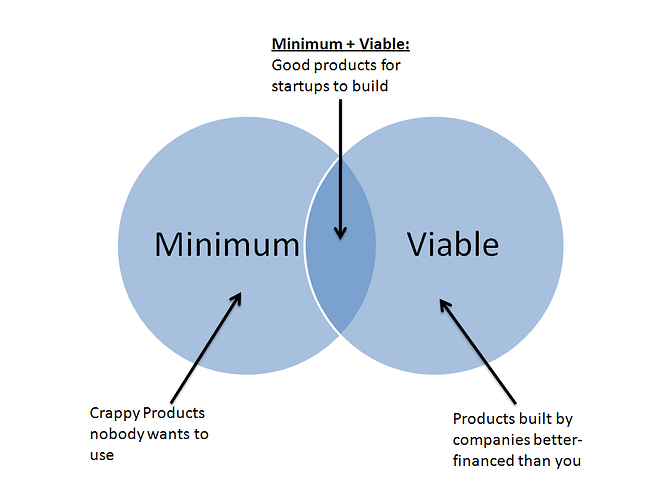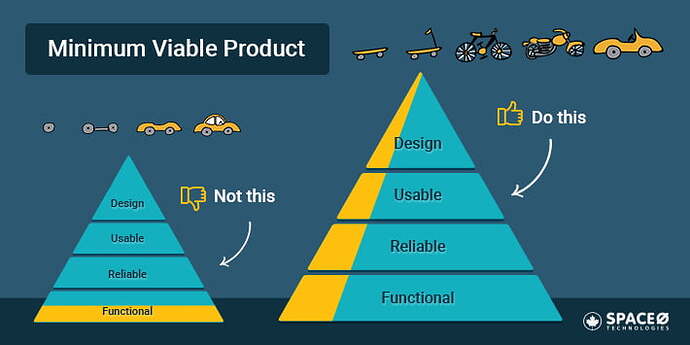In web2, we had a concept that was pretty core to many product organizations I’ve worked at called the minimum viable product.
From wikipedia:
A minimum viable product ( MVP ) is a version of a product with just enough features to be usable by early customers who can then provide feedback for future product development.
The key part of building for an MVP is honing your understanding of
- minimal - how much can we scope down the product for its initial release?
- viable - how can the product be as viable as possible?
- the exploration of the design space & navigation of the tradeoffs between the two above constraints is where magic happens.
By focusing on the absolutely minimum viable product for each new product release, we are able to test a product hypothesis with minimal resources, reduce wasted engineering hours, and accelerate learning.
I think that the concept of the minimum viable product was useful in web2, and I also think it’s useful to the web3-era of products. As we learn more about reinventing how products are built within DAOs + try to keep what has worked in the past, I invite you to learn more about minimum viable products here. As the DAO is shipping new protocols to market in the future, it will be fruitful to build the muscle of navigating this design space together.


